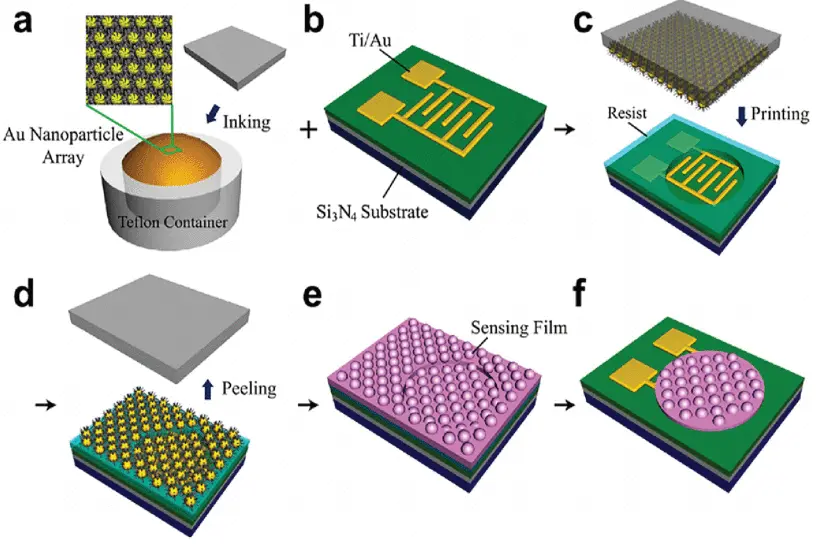Research of Low-Power MEMS-Based Micro Hotplates Gas Sensor: A Review
Gas sensing technology has become increasingly important in industrial settings, home environments, and outdoors to monitor air quality and for environmental studies. Gas detection is also used in medical applications for the early diagnosis of diseases through exhaled air. Various sensors have been developed based on changes in electrical or other properties like thermal conductivity, optical absorption, or acoustic propagation to determine the type and concentration of gas.
Metal oxide semiconductor sensors are the most prevalent gas sensors. Traditionally, a ceramic tube acts as a heater, with metal oxide sensing material coated onto it. When the sensitive surface comes into contact with a particular gas, either oxidization or reduction occurs, inducing a change in the sensor resistance. The sensing surfaces' resistance is measured using electrodes and converted into voltage. This voltage output can help identify the type and concentration of gas.
However, ceramic tubes could be bulkier and energy inefficient. Such sensors are also not easily integrated with other electronic instruments.
In comparison, the micro-electro-mechanical systems (MEMS) micro hot plate gas sensors are small-sized and energy efficient. They show good performance with high sensitivity and can be mass-produced.
Low power consumption is crucial for robust, portable, and remote sensors. Heat loss in micro hotplate sensors leads to high power consumption.
Various forms of thermal loss and parts of micro hotplates contributing to thermal loss are discussed here in an analytical study. The fabrication processes of the sensor plate substrate and sensing layer are analyzed. This study may achieve optimal power consumption and stability in the MEMS-micro hot plate gas sensors.
The micro hotplates are fabricated by depositing thin films of palladium, molybdenum, or ceramic over a silicon substrate. The gas sensing layer is assembled with the hotplate using different processes like printing, depositing, sputtering, etc. The stable properties of platinum make it the preferred choice for heating electrodes.
There are three types of thermal loss in micro hot plate sensors: heat conduction, convection, and radiation.
Thermal conduction was the major contributor to heat loss in micro hot plate sensors. The main components contributing to heat loss through conduction are the hotplate surface, insulation membrane, cantilever beam, and heating electrodes. Heat conduction also occurs between the membrane film and the substrate.
Reducing the heating electrodes' thickness can lower the conduction rate but destabilize the electrode at temperatures higher than 500 °C. A 10nm Ti adhesion layer between the heating electrode and the hot plate significantly enhances the stability of the sensor. Optimizing the morphology of the heating electrode can lower thermal conduction while maintaining its structural stability.
Suspended membrane structures have lower power consumption and faster response times than closed-membrane structures. Insulation grooves between parts of the sensor can reduce heat transfer. Minimization of the width, as well as the number of cantilever beams, also helps in lowering thermal conduction and, thereby, power consumption.
Impact resistance, mechanical strength, and thermal stability play a significant role in the reliability and efficiency of gas sensors. Further studies are required to optimize the overall structure of MEMS-micro hotplate sensors.




